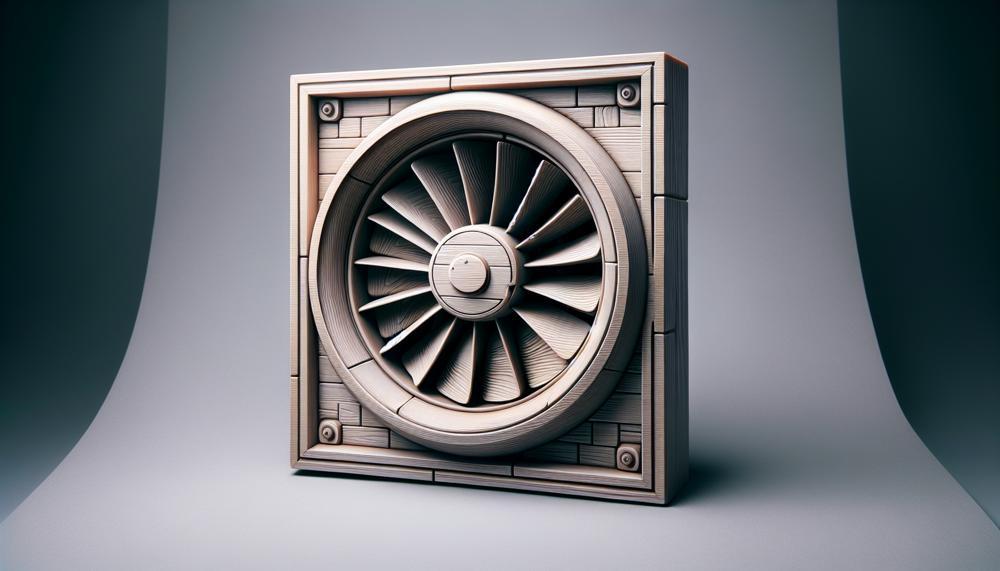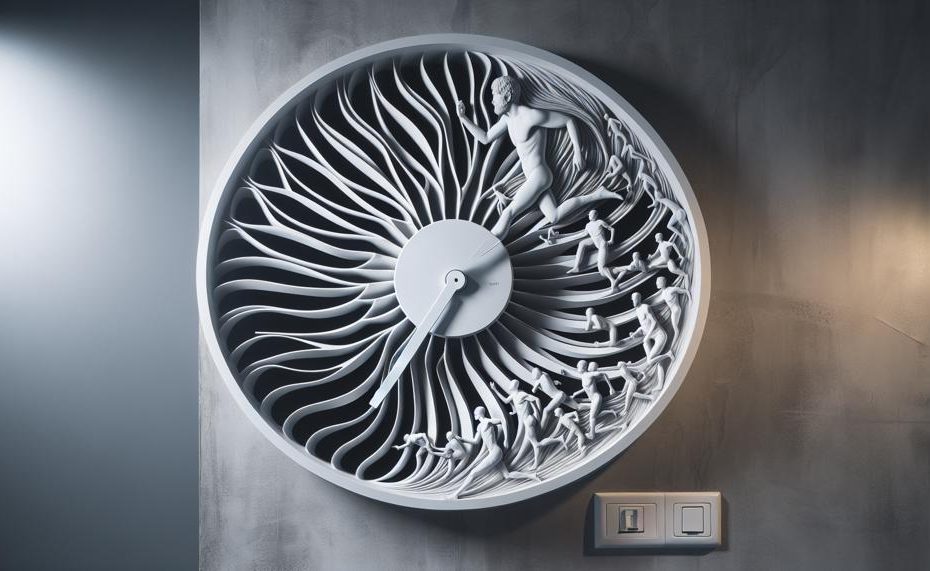Imagine yourself having a warm, steamy shower with your favorite shampoo filling the air, and warm water pouring over your body.
What happens to all that extra wetness and smell after you turn off the water, however, is something you may not have ever considered.
Your bathroom exhaust fan may help with that. It is essential to maintaining the cleanliness and freshness of your bathroom. Have you ever considered, however, how long it ought to last?
We’ll talk about bathroom exhaust fans and their running times in this blog article so you can see why it matters.
So, how long can a bathroom exhaust fan run?
Most bathroom exhaust fans are designed to run for 10–20 minutes, but can be safely run for longer. Some recommend turning the fan on as soon as you start the shower or bath, and leaving it on for at least 20 minutes after you get out. This helps clear humidity from the room and ventilation ductwork.
You shouldn’t use a bathroom exhaust fan for long periods of time, and should turn it off when you leave the house. Leaving the fan on for too long can cause the fan to overheat, the motor to stop working, or the electricity bill to rise.
Contents
- 1 The Importance of a Bathroom Exhaust Fan
- 2 Factors That Affect the Running Time of a Bathroom Exhaust Fan
- 3 Can Bathroom Exhaust Fans Run Continuously?
- 4 How Much Does It Cost To Run A Bathroom Fan 24/7
- 5 Risks of Running a Bathroom Exhaust Fan for Too Long
- 6 Best Practices for Using Your Bathroom Exhaust Fan
- 7 Conclusion
The Importance of a Bathroom Exhaust Fan
Having a bathroom exhaust fan is of utmost importance for both health and home maintenance reasons. This essential device removes moisture, odors, and stale air, preventing bacteria and mold growth in the bathroom. It functions by exhausting air through a vent duct or exit vent on the exterior of the house.
Improper ventilation can lead to damage to walls and plumbing, causing mold growth and structural problems.
Aside from health concerns, utilizing a bathroom exhaust fan also aids in keeping your bathroom clean. Even with a spotless bathroom, excess moisture can create a breeding ground for germs on plumbing fixtures. The fan reduces moisture levels and maintains a hygienic bathroom.
To ensure optimal effectiveness of the bathroom exhaust fan, it is recommended to run it for 30 minutes to an hour after using the bathroom. However, this timeframe may differ based on factors such as fan type, capacity, and bathroom size.
Referring to manufacturer instructions and following best practices will aid in determining the appropriate running time for your specific fan.
Factors That Affect the Running Time of a Bathroom Exhaust Fan
The factors that influence the running time of a bathroom exhaust fan are varied and should be taken into consideration when selecting and installing one. These factors include the type and size of vent used, the size of the home, the number of bends in the ductwork, the presence of blockages, the type and power of the fan, local building codes, and moisture levels in the bathroom.
The type and size of vent used can greatly affect the running time of a bathroom exhaust fan. A larger vent allows for better air flow, resulting in a shorter running time as it efficiently removes moisture and odors from the bathroom. Similarly, the size of your home can also impact the running time, with larger homes requiring longer running times due to their increased space for moisture and odors to accumulate.
In addition to these external factors, the efficiency of your bathroom exhaust fan can also be affected by internal factors such as the number of bends in your ductwork and any blockages present. The more bends in the ductwork, the harder it is for air to flow through, resulting in a longer running time. Blockages can also hinder air flow and should be regularly checked and cleaned to maintain optimal performance.
The type and power of your fan also play a significant role in its running time. Higher-powered fans with larger motors can quickly remove moisture and odors, resulting in a shorter running time. However, it is important to note that local building codes may have specific requirements for bathroom exhaust fans, such as minimum CFM ratings or maximum noise levels which could impact your choice of fan and its running time.
Lastly, moisture levels in the bathroom can also affect how long your exhaust fan needs to run for proper ventilation. Bathrooms with higher humidity levels may require longer running times to effectively remove excess moisture.
Can Bathroom Exhaust Fans Run Continuously?
No, it is not recommended to continuously run a bathroom exhaust fan. While these fans are specifically designed for use in bathrooms and are equipped with materials that resist moisture, extended use can potentially lead to safety hazards.
Usually mounted on walls or ceilings, bathroom exhaust fans are used to remove moisture, odors, and pollutants from the air. They should only be used during and after showering or bathing, typically for around 20 minutes, to prevent the accumulation of moisture and mold in the bathroom.
Running a bathroom exhaust fan continuously can create several safety concerns. Firstly, it can increase the risk of motor overheating and malfunctioning. Overheating can cause the fan to overexert itself, which may lead to electrical fires. According to a study by the U.S. Consumer Products Safety Commission, over 75% of exhaust fan fires occur in residential bathrooms.
Additionally, using the fan continuously can also cause a buildup of dust, dirt, and other debris in the motor, increasing the risk of fire. Faulty wiring or an old fan can also contribute to potential fire hazards.
How Much Does It Cost To Run A Bathroom Fan 24/7
The estimated price of continuously operating a bathroom ventilation system for 24 hours per day, seven days per week can vary based on the fan’s size and power. It can typically range from $0.8 to $1.5 per day.
To better comprehend the cost of running a bathroom fan constantly, let’s break down the factors that contribute to its energy consumption and ultimately, its cost.
Size and Power of Fan:
The fan’s size and power play a major role in its energy consumption. Generally, larger and more powerful fans require more energy compared to smaller ones. This is due to their need for more electricity to operate at maximum capacity.
According to Energy.gov, an average-sized bathroom fan uses approximately 60 watts per hour. So when we multiply that by 24 hours, the total daily energy consumption would be 1440 watts or 1.44 kilowatt-hours (kWh). This indicates that for every hour the fan runs, it will cost about $0.08 to $0.15 depending on your electricity rate.
Electricity Rates:
The price of electricity varies based on your location and electricity provider. On average, residential electricity rates in the United States range from $0.08 to $0.27 per kWh.
Therefore, the cost of running a bathroom fan for 24 hours can range from $0.8 to $1.5 per day.
Maintenance:
Regular maintenance of your bathroom ventilation system can also impact its energy consumption and overall cost of continuous operation. A dirty or clogged fan may require more energy to operate efficiently, which can increase its energy consumption and ultimately, its cost.
So, running a bathroom exhaust fan 24/7 can range from $0.8 to $1.5 per day depending on the size and power of the fan, your location’s electricity rates, and regular maintenance of the system.

Risks of Running a Bathroom Exhaust Fan for Too Long
Running a bathroom exhaust fan for an extended period of time comes with its own set of risks and dangers, including increased energy consumption and potential safety hazards. These are some potential risks to keep in mind:
Excessive Wear and Tear
Running a bathroom exhaust fan for too long can cause unnecessary wear and tear on the fan’s motor, which may lead to malfunctions or breakdowns.
This can result in costly repair or replacement expenses.
High Energy Usage
As mentioned earlier, constantly running a bathroom fan can lead to higher energy consumption and consequent increase in electricity bills.
This can add up over time, especially if you have multiple bathrooms equipped with exhaust fans.
Safety Concerns
Leaving a bathroom fan running for extended periods may pose potential safety hazards, such as overheating or short-circuits. This is particularly true if the fan is not properly maintained or there are any underlying electrical issues.
Risk of Mold Growth
A primary function of a bathroom exhaust fan is to remove excess moisture from the air to prevent mold growth. However, running the fan for too long can have the opposite effect and create an ideal environment for mold to thrive.
Disturbing Noise
Continuous operation of a bathroom exhaust fan can also contribute to noise pollution, especially if the fan is old or not installed properly. This can be a nuisance for homeowners as well as their neighbors.
To avoid these potential risks and dangers, it is crucial to follow the manufacturer’s instructions and recommended maintenance procedures for your bathroom exhaust fan. It’s also helpful to understand the capabilities and limitations of your specific fan model in order to use it efficiently.
Best Practices for Using Your Bathroom Exhaust Fan
Run the exhaust fan for the whole length of your shower and for an extra twenty minutes thereafter to make sure your bathroom is dry and odor-free. But remember that this recommended duration might change based on personal circumstances like your bathroom’s size, shower duration, and humidity levels.
It is preferable to operate the fan for a longer length of time if you take longer showers. Similar to this, bigger bathrooms would need to run the fan for a longer period of time before it completely removes all moisture. It could also be required to operate the fan for a longer amount of time during hot and steamy showers or in very humid conditions.
It’s important to remember that various fan kinds could have varying ventilation capacities. It’s crucial to refer to the manufacturer’s instructions for precise run time recommendations. Furthermore, in humid seasons or high-humidity places, it may be required to operate the fan for extended periods of time in order to remove moisture adequately.
It could also take longer for the fan to completely eliminate strong smells. Running the fan for an extra twenty minutes after taking a shower is the suggested duration; however, if the odor is greater, a longer run time can be required.
To guarantee optimum performance, it is essential to clean and repair your exhaust fan on a regular basis. This entails routinely replacing the filter and clearing away any dust or debris accumulation from the fan blades. It will be more successful to remove moisture and smells from the bathroom with a well-maintained fan.
Conclusion
To sum up, the bathroom exhaust fan is a crucial part of keeping a fresh and clean bathroom atmosphere.
Its primary purpose is to provide a sanitary environment by eliminating excess moisture and offensive smells. Although running the fan for 30 to 60 minutes after each usage is typically advised, this may vary based on the kind of fan, the size of the bathroom, and the humidity levels. It’s critical to strike a balance between energy economy and adequate ventilation.
Maintaining the longevity of your exhaust fan and averting any safety risks need regular maintenance and adherence to manufacturer specifications. You may establish a more hygienic and productive home environment by realizing the significance of its running duration and putting best practices into effect.





